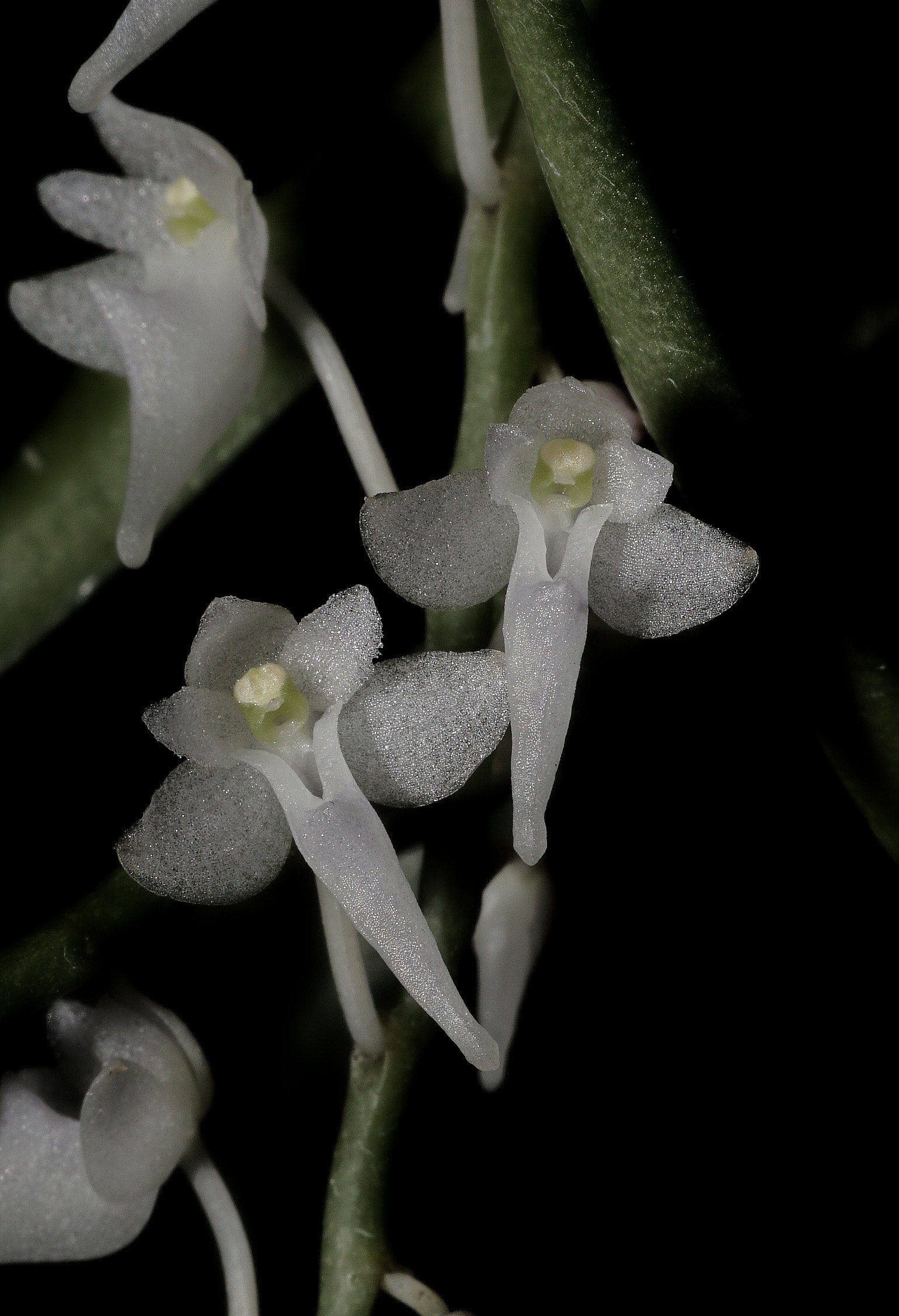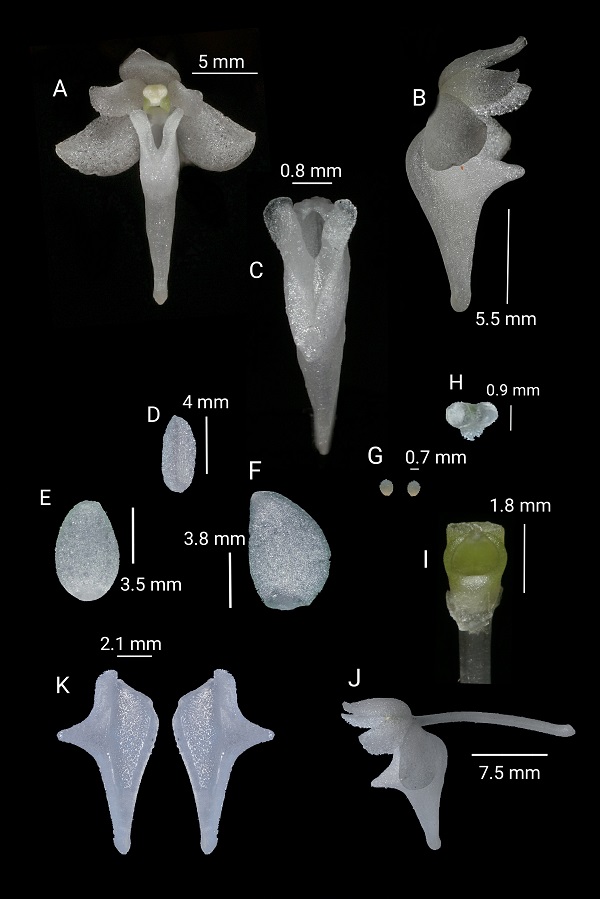Tuberolabium is a genus of epiphytic flowering plants from the orchid family, Orchidaceae. The genus comprises of monopodial epiphytes that produce pendent, many- and small-flowered inflorescences.
In October 2019, an unidentified epiphytic orchid was collected in the Mountain Masigit area, West Java, Indonesia and has subsequently been cultivated. After detailed morphological examination of flowering specimens in 2020 and thorough review of protologues and digitized type specimens, researchers found that the taxon belongs to Tuberolabium, however, it doesn’t match to any existing member of the genus.
Researchers from Xishuangbanna Tropical Botanical Garden (XTBG) and their collaborators confirmed it new to science. They named it as Tuberolabium camperenik to mean the small, attractive, beautiful, cute, and unique alluring to the flowers of this magnificent species. The new species was published in Taiwania.
Tuberolabium camperenik is a monopodial, epiphytic herb. It differs from the three Indonesian Tuberolabium species (T. odoratissimum, T. erosulum and T. pendulum) in having crystal white flowers and a long, very narrow spur which is not thickened on the front wall around the epichile.
T. camperenik is morphologically closely similar to T. odoratisimum but differs in having longer elliptic-oblong petals, and a longer conical labellum with longer triangular midlobe without coloration.
T. camperenik is endemic to western Java, Indonesia. It has so far only been found at its type locality, i.e. Mount Masigit, West Java, Indonesia. It is found thriving on steep slopes of upper montane forest with deeply shaded and high-humidity and elevation range of 1000 to 1500 m above sea level. The plants were growing epiphytically on large tree branches along with other orchid species.
“The new addition of T. camperenik brings the total number for the genus Tuberolabium to nine,” said Mark Arcebal K. Naive, a Filipino Ph.D candidate pursuing his academic degree at XTBG.
Contact
Mark Arcebal K. Naive
Center for Integrative Conservation, Xishuangbanna Tropical Botanical Garden, Chinese Academy of Sciences, Menglun, Mengla, Yunnan 666303, China
E-mail: arciinaive19@gmail.com

Tuberolabium camperenik with crystal white flowers. (Image by Y.R. Yudistira)

Tuberolabium camperenik A. Flower frontal view, B. Flower side view, C. Labellum frontal view, D. Petal, E. Median sepal, F. Lateral sepal, G. Pollinia, H. Anther cap, I. Column frontal view without anther cap, J. Flower side view
with pedicel and ovary; K. Labellum split vertically. (Image by Y.R. Yudistira)


